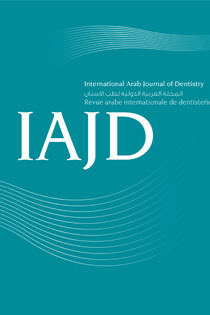Abstract
The aim of the present study was to compare the sealing ability of zinc-oxide sealer and resin-based sealer (EndoREZ®)using two different root canal filling techniques, the cold lateral condensation and the single cone technique. Forty-five root canals of human incisors, canines and premolars were selected and prepared using RaCe rotary files (FKG, La Chaux-de-Fonds, Switzerland). The specimens were randomly divided into 3 groups (n = 15). The first group received a root filling using cold lateral condensation of gutta-percha cones and zinc-oxide eugenol-based sealer. In the second group, root canals were filled using EndoREZ® single cone technique and EndoREZ® sealer (Ultradent Inc., South Jordan, UT). The third group received a root filling by cold lateral condensation of EndoREZ® points (Ultradent Inc., South Jordan, UT) and EndoREZ® sealer (Ultradent Inc., South Jordan, UT). Two layers of nail polish were applied to the tooth surface, except for the apical 2 mm. After decalcification with nitric acid and clarification, the sealing ability was evaluated by measuring the dye penetration along the canal walls. The zinc-oxyde eugenol-based sealer and the gutta-percha core combination showed higher sealing ability than the EndoREZ® sealer and the gutta-percha core combination. The lateral
condensation with EndoREZ® exhibited more sealing ability than the single-cone technique.

